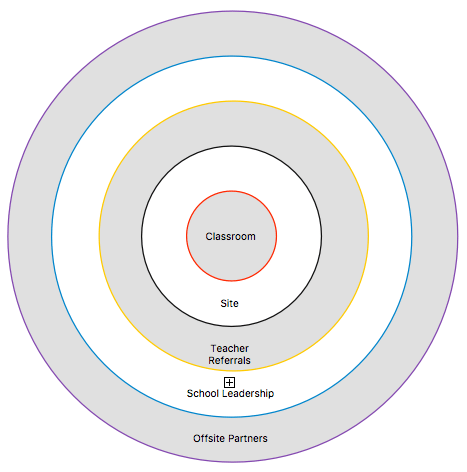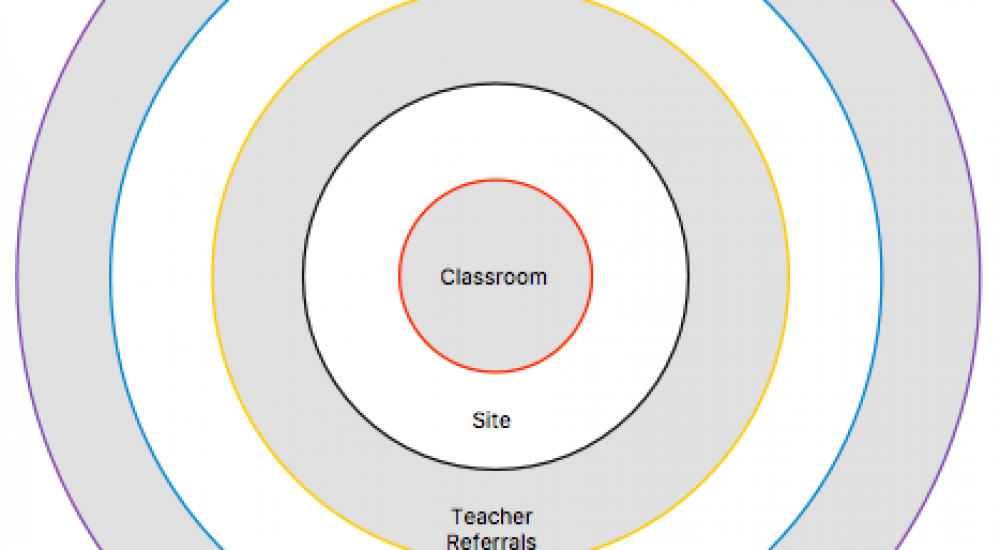This is the second installment of our two-part blog series focused on practical student recruitment strategies. You can read the first part blog here.
#6: Think socially
Create opportunities for participants to bring their friends. It’s not always about your students coming to their class everyday. Create events or opportunities for registered students to go through a little bit of your program’s experience. It could be team building games at lunch, or a scavenger hunt after school, or a Bring-A-Friend Field Trip.
By the way, start naming things other than what they are. For example, call your field trips “vacations” or some of your dances “clubs,” “grooves,” “turn-up,” etc.
Have classroom challenges between your classrooms. Create contests by where students join their program leader in growing the size of the class! Create incentives to where if someone brings their friend to program for five straight days, there’s something in it for both of them. Remember that coming to program is about the win-win for students. Middle school students are not known for being altruistic. At least not in the beginning.
#7: Call it what it is…DATA!
Someone has to be committed to tracking the numbers. It’s a cold-hearted breakdown and you have to be OK with it. This person, most likely you as the Program Manager or Site Coordinator, have to look how attendance is fluctuating and pinpoint some of the reasons why. For examples…
- Basketball numbers went down because our usual coach is hurt right now and the kids don’t like the current coach.
- Our cooking program is not doing too well because there’s only 6th graders in that class and our 7th and 8th graders won’t touch it!
- Our dance class is not pulling numbers because the group of students in that class are clique-ish and no one else wants to join. Maybe we have some “mean girls” in there that are keeping people out.
You get the point. Someone has to push for meaning. What’s behind the data? These challenges require some thoughtful “Plan B’s” if you will.
#8: Understand that there is a “tipping point”
You know the old adage, “If you want to have 50 people at your party, invite 200 of them!”
If you really want to see your numbers increase, you have to go for volume. I know we can start thinking about making a difference for one child at a time. You can still do that, but we know our pursuit is impact. You will have to reconcile in your mind that you will start making a difference for a small group of kids. Say about 20-30. It’s how you work with that small cohort that makes all the difference. This group is your base. Your believers. You know have to take that political capital and grow that number of students that you are serving.
In my mind, there are two populations of students:
- The group(s) that we are reaching out to
- The kids we are actually serving
We can reach out to kids all year long, while maintaining a focus on serving those that are coming to program everyday. The greater the number you reach out to, the better your chances that you will increase the number of youth you serve throughout the school year! For this, culminating events, showcases, shows and performances are HUGE! These events build your brand, which then draws in more kids you’re outreaching to, which ultimately may lead to them being served by you for the rest of the school year!
#9: Understand the family dynamic
Over the past few years, I have witnessed more and more siblings joining us either with their oldest brother/sister, or coming to the program shortly after the oldest moves on to high school. Talk to your students about their little brother or sister coming to program. I have often witnessed that older siblings coming back and frequenting the programs if their little brother, sister, niece, nephew or cousin are participating. Sometimes, these same students become staff that can reach out and connect with youth better than most. The responsibility of having a family member in the program elevates the level of ownership for our alums.
#10 : Adopt the mindset that recruitment is a year-round endeavor.
One of the most important components of school site leadership, it for site coordinator to not let off the recruitment “pedal”. As you establish all the habits and strategies listed above, it is imperative that you and your team continue to push ahead and continue reaching out to the student body throughout the school year.
- Pre-program recruitment in May and June. Visiting local feeder schools.
- Communication and applications go home for the next school year prior to summer. Enroll kids for the next school year while you have them in June!
- Summer outreach during summer bridge programs in July and August.
- Outreach during the first week of school. Rush week! This means September and in some instances, October. Allow students to drop in and observe program as a guest.
- Staff turnover in the early fall months keeps your head on a swivel. One or two staff members leaving in October could be a 20-40 student swing! Be ready for that.
- Keeping numbers high in November and December through holiday events, showcases, family dinners, acts of giving back to the community, etc.
- Getting students back into the swing of things in January. It’s almost like starting the school year all over again!
- Spring break and testing periods in March/April can reduce your numbers if you don’t have a strategy for the testing season.
- And you’re back to May!
When you approach your student recruitment plan, follow this logic:
- Recruitment at the classroom level – Program Leaders are your first line of defense
- Recruitment at the site level – Site Coordinators need to lead courageously and creatively in establishing site events that draws in new students
- Recruitment through referrals – Teachers know who you are, what you offer, and are able to refer their students
- Recruitment through buy-in from school leadership – Your school principal has the ability to activate resources and services at our school to support your ongoing recruitment
- Recruitment through offsite partners – The right program partner will boost your cred and give you a whole new crop of students that you may not have been able to serve before

For breakfast, I had a bacon, cheddar, and egg sandwich from Starbucks and an iced coffee.
Author Profile: @carlossantini
